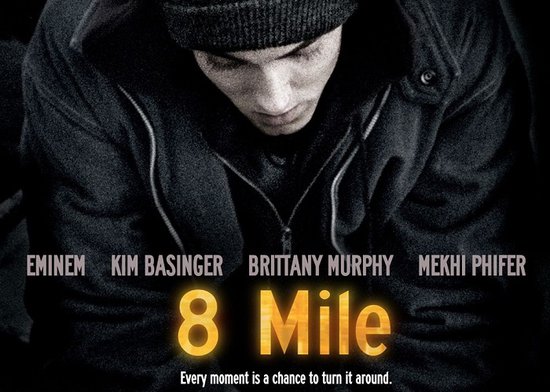Police
Police officers may submit a publication for classification under section 13(1)(ab) of the Films, Videos, and Publications Classification Act 1993 (Classification Act).
Submissions are made on behalf of the Commissioner of Police. There is no fee for submitting a publication under section 13(1)(ab).
Pre-Submission Process
Frequently Asked Questions
How to submit a publication for classification
What if there is a Court Order or referral by a judge?
What to do if there are a large number of publications
What else do submitters need to know?
Written submissions from interested parties
How long does it take to reach a decision?
How to submit a publication for classification
To submit a publication under section 13(1)(ab) of the Classification Act, the submitting police officer must complete a ‘notice of submission’. A notice of submission must include:
- A completed Notice of Submission (Officials) form. If the owner is known, include their contact details and those of their legal counsel. We are obliged to inform the owner of a publication that it has been submitted for classification and give them an opportunity to make written submissions.
- A copy of the publication/s to be classified.
- If more than one publication is being submitted then a schedule that accurately lists the names of the publications should be included. The schedule should contain a brief description of the publication and any other relevant information. A sample schedule can be downloaded here.
Useful links
- Notice of Submission (Officials) form
- Sample schedule of publications
- Section 13 - Submission of publications by others
- Section 19 - Notification of submission
- Section 20 - Right to make submissions
What if there is a Court Order or referral by a judge?
Police may also be involved in the submission of publications because the court has referred them for classification. If there is a Court Order or a referral by a judge in a case that is already before the courts, the publications need to be submitted under section 29 of the Classification Act. Contact the registrar of the court and inform them the submission needs to be made by them under section 29.
Useful links
- Section 29 - Referral of publications by courts
- Submission information for court officials
What to do if there are a large number of publications
If there are a large number of publications, a representative sample should be submitted. The more publications that are submitted, the longer it will take us to classify them.
- If there are a number of images depicting something similar or identical, then a representative sample of them should be submitted.
- If there is more than one copy of a publication (for instance, the owner has four copies of the same image) then only one should be submitted. This is because the classification given to a publication applies to all identical copies.
- Publications that are clearly not objectionable (for instance images of clothed children on the street or outdoors with no other elements involved) should not be submitted, as these can only be classified as unrestricted.
We're happy to provide advice to officials who are unsure what to submit. Our contact details can be found here.
How to title publications
When giving publications titles, officials should:
- Avoid giving publications generic titles such as “Image 1”. We have numerous historic publications with similar titles in the system, making it difficult to differentiate them.
- Not include the name of the defendant, owner or the subject in the title.
- Use the filename digital publications were saved with, even if this a long sequence of letters and numbers.
- Use text that appears to be a title within the publication (if there is one), or include it as an alternative title in the case of a digital publication that has a filename.
- Reflect the same capital and lower case conventions as those that appear on the publication (for example LL20i3Ep.jpg).
How to send publications
Publications are almost always submitted to the Classification Office in a digital format. A direct copy of the original publication should be submitted. Screenshots or a photo of the publication on a phone or computer screen should not be submitted.
Publications may be submitted on an encrypted or password-protected disc or USB. These can be couriered or hand delivered to our office in Wellington. Passwords and instructions for decrypting folders and files should be emailed separately to submissions@classificationoffice.govt.nz.
Physical or hard copies of publications can also be securely couriered or hand delivered to our office. Submitters wanting to use a different method can contact us.
Image and video files should be in common digital formats that can be easily be accessed (such as JPG, PNG or PDF for images and MPEG, MOV, AVI or WMV for videos), though we will endeavour to examine publications in whatever formats are available. Text files should be sent as PDFs where possible.
Officials should retain the original or a copy of the publication in their possession. If the owner's legal representative contacts us to view the publication (in order to make a written submission on the classification), we will direct them to the submitter.
We will make a copy of the publication for our records and return discs and USBs once the publication has been classified.
What else do submitters need to know?
Contextual information
We base our classification only on the information contained within the publication itself and generally cannot take into account who the owner is, the circumstances in which the publication was discovered, what charges the owner is facing, or their criminal history (unless this information is evident within the publication itself). We classify the publication in relation to its effect on the New Zealand public rather than the owner or their actions.
Contextual information regarding a publication is still helpful to give us an idea of the circumstances surrounding the submission, even though we may not be able to take this information into consideration in the classification itself. It is useful to have the submitter's opinion on what they think the classification should be and why. We will consider this information as a written submission.
Do publications need to be classified in order to press charges?
There is no legal requirement to have a publication classified objectionable in order to lay charges in relation to the creation, distribution, supply, exhibition or possession of that publication. Submitters can contact us if they are unsure.
Does the Office take categories of offending into account?
No, the Classification Act allows us to classify publications as unrestricted, age restricted, or objectionable (banned). Categories of offending are not a consideration in our decision-making.
Court dates
Officials should let us know if a court date has been set. We will do our best to prioritise submissions, but if we are busy we will let submitters know so that the hearing date can be changed.
Name suppression
Submitters should indicate whether name suppression is in force and briefly describe the relevant conditions or dates, if possible.
Written submissions from interested parties
The Classification Office will seek written submissions from interested parties.
Who do we notify?
When the Classification Office receives a publication from Customs, the Chief Censor decides who, other than the submitter, should be informed. This is so that interested parties, such as the person being investigated or prosecuted, can make written submissions on the classification of the publication.
The people generally considered to have an interest in the classification of a publication are the owner, maker, distributor or publisher of the publication. However, the Chief Censor has the authority to invite anyone who may be affected by the classification to make written submissions.
In straightforward cases the Classification Office will almost always notify the following parties and inform them of their right to make written submissions:
- The submitter.
- The owner’s legal counsel (or the owner if no legal counsel is identified).
- The Secretary for Internal Affairs.
Consultations
The Classification Act also allows us to consult with other interested parties or organisations regarding issues that a publication has raised, especially if it is of significant public interest. If this is done, it is likely to lengthen the processing time. We will advise submitters if this is going to be the case
Timeframe for written submissions
The timeframe for written submissions is generally 10-14 working days and the classification process cannot be completed until the submission date has lapsed. Any party can request an extension to the submission period if there are valid reasons.
Information that is relevant to the classification included with the notice of submission will be considered as written submissions. Officials do not have to resend this information, but submitters do have the opportunity to submit any new relevant information.
Will officials be able to see submissions from other parties?
The Classification Office does not circulate submissions in normal circumstances. Officials should not expect to receive a copy of submissions made by the owner or their legal counsel. A summary of any submissions that have been taken into consideration will be included in the final written decision.
The Classification Office does not hold hearings or ask people to appear before it to make submissions in person.
Useful links
- Section 19 - Notification of submission
- Section 20 - Right to make submissions
How long does it take to reach a decision?
The speed with which a decision is reached depends on a variety of factors, including:
- The number of publications submitted.
- The complexity of the publications.
- Any extensions granted for written submissions.
- The need for consultation.
- Our workload.
It can take up to three months or more to classify a publication depending on the factors listed above. We do our best to prioritise submissions from proceedings with set court dates or other timeframes.
Written notice outlining reasons for the decision
At the end of the classification process, the Classification Office will send a written Notice of Decision (under section 38 of the Classification Act) to the submitter. The Notice of Decision is also sent to the other interested parties. It details the findings of the Classification Office's examination of the publication under sections 3, 3A and 3B of the Classification Act.
Once the Notice of Decision has been sent, the decision is published in the NZ Register of Classification Decisions. The register page includes the classification and a brief summary of reasons for the decision.
Useful links
- Sections 3, 3A and 3B - Meaning of objectionable
- Section 38 - Decisions of Classification Office
Reviews and reconsiderations
Classification Office decisions
Publications classified by the Classification Office may be reviewed by the Film and Literature Board of Review.
Once a classification has been entered into the NZ Register of Classification Decisions, anyone can apply for a review by the Film and Literature Board of Review. Interested parties have an automatic right of review.
The application period is limited to 30 working days from the date on which the decision was registered.
For more information, see Getting a classification decision reviewed.
Request by a person charged with an offence
A person charged with an offence can request that a classification decision be reconsidered after one year.
Classification Office or Board of Review decisions are regarded as conclusive evidence. However once a year or more has elapsed, the court, at the request of a person charged with an offence under the Classification Act, can refer a decision (under section 41(2) of the Classification Act) to the Classification Office for reconsideration, or to the Film and Literature Board of Review where it is a decision of the Board.
Reconsiderations after three years
Once three or more years have elapsed, anyone, with the leave of the Chief Censor, can seek a reconsideration (under section 42 of the Classification Act) of a Classification Office decision.
Useful links
- Section 41 - Decisions to be conclusive evidence
- Section 42 - Reconsideration of publications
- Section 47 - Right of review
Was this helpful?
If you'd like to know more about this topic, get in touch. We're happy to help.



